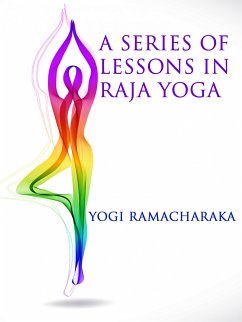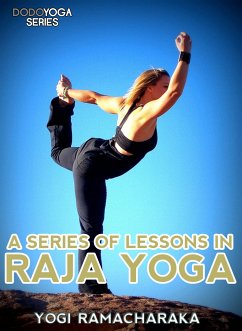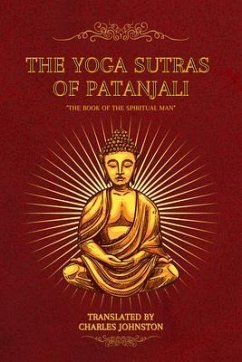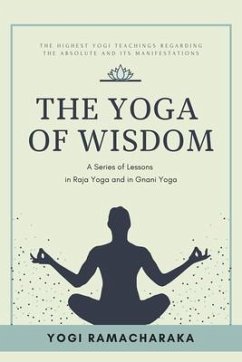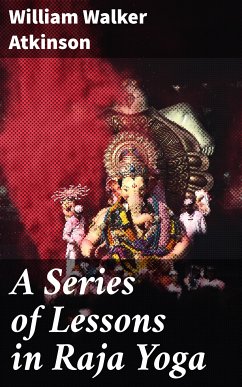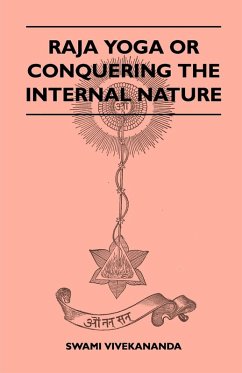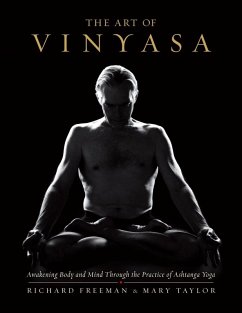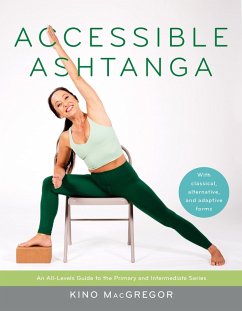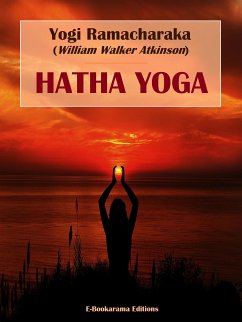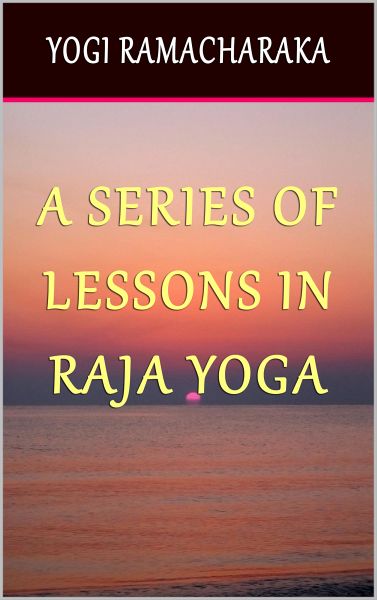
A Series of Lessons in Raja Yoga (eBook, ePUB)

PAYBACK Punkte
0 °P sammeln!
In India, the Candidates for Initiation into the science of "Raja Yoga," when they apply to the Yogi Masters for instruction, are given a series of lessons designed to enlighten them regarding the nature of the Real Self, and to instruct them in the secret knowledge whereby they may develop the consciousness and realization of the real "I" within them. They are shown how they may cast aside the erroneous or imperfect knowledge regarding their real identity.Until the Candidate masters this instruction, or at least until the truth becomes fixed in his consciousness, further instruction is denied...
In India, the Candidates for Initiation into the science of "Raja Yoga," when they apply to the Yogi Masters for instruction, are given a series of lessons designed to enlighten them regarding the nature of the Real Self, and to instruct them in the secret knowledge whereby they may develop the consciousness and realization of the real "I" within them. They are shown how they may cast aside the erroneous or imperfect knowledge regarding their real identity.
Until the Candidate masters this instruction, or at least until the truth becomes fixed in his consciousness, further instruction is denied him, for it is held that until he has awakened to a conscious realization of his Actual Identity, he is not able to understand the source of his power, and, moreover, is not able to feel within him the power of the Will, which power underlies the entire teachings of "Raja Yoga."
The Yogi Masters are hot satisfied if the Candidate forms merely a clear intellectual conception of this Actual Identity, but they insist that he must feel the truth of the same-must become aware of the Real Self-must enter into a consciousness in which the realization becomes a part of his everyday self-in which the realizing consciousness becomes the prevailing idea in his mind, around which his entire thoughts and actions revolve.
To some Candidates, this realization comes like a lightning flash the moment the attention is directed toward it, while in other cases the Candidates find it necessary to follow a rigorous course of training before they acquire the realization in consciousness.
The Yogi Masters teach that there are two degrees of this awakening consciousness of the Real Self. The first, which they call "the Consciousness of the 'I'," is the full consciousness of real existence that comes to the Candidate, and which causes him to know that he is a real entity having a life not depending upon the body-life that will go on in spite of the destruction of the body-real life, in fact. The second degree, which they call "the Consciousness of the 'I AM'," is the consciousness of one's identity with the Universal Life, and his relationship to, and "in-touchness" with all life, expressed and unexpressed. These two degrees of consciousness come in time to all who seek "The Path." To some it comes suddenly; to others it dawns gradually; to many it comes assisted by the exercises and practical work of "Raja Yoga."
Until the Candidate masters this instruction, or at least until the truth becomes fixed in his consciousness, further instruction is denied him, for it is held that until he has awakened to a conscious realization of his Actual Identity, he is not able to understand the source of his power, and, moreover, is not able to feel within him the power of the Will, which power underlies the entire teachings of "Raja Yoga."
The Yogi Masters are hot satisfied if the Candidate forms merely a clear intellectual conception of this Actual Identity, but they insist that he must feel the truth of the same-must become aware of the Real Self-must enter into a consciousness in which the realization becomes a part of his everyday self-in which the realizing consciousness becomes the prevailing idea in his mind, around which his entire thoughts and actions revolve.
To some Candidates, this realization comes like a lightning flash the moment the attention is directed toward it, while in other cases the Candidates find it necessary to follow a rigorous course of training before they acquire the realization in consciousness.
The Yogi Masters teach that there are two degrees of this awakening consciousness of the Real Self. The first, which they call "the Consciousness of the 'I'," is the full consciousness of real existence that comes to the Candidate, and which causes him to know that he is a real entity having a life not depending upon the body-life that will go on in spite of the destruction of the body-real life, in fact. The second degree, which they call "the Consciousness of the 'I AM'," is the consciousness of one's identity with the Universal Life, and his relationship to, and "in-touchness" with all life, expressed and unexpressed. These two degrees of consciousness come in time to all who seek "The Path." To some it comes suddenly; to others it dawns gradually; to many it comes assisted by the exercises and practical work of "Raja Yoga."
Dieser Download kann aus rechtlichen Gründen nur mit Rechnungsadresse in A, B, BG, CY, CZ, D, DK, EW, E, FIN, F, GR, H, IRL, I, LT, L, LR, M, NL, PL, P, R, S, SLO, SK ausgeliefert werden.




